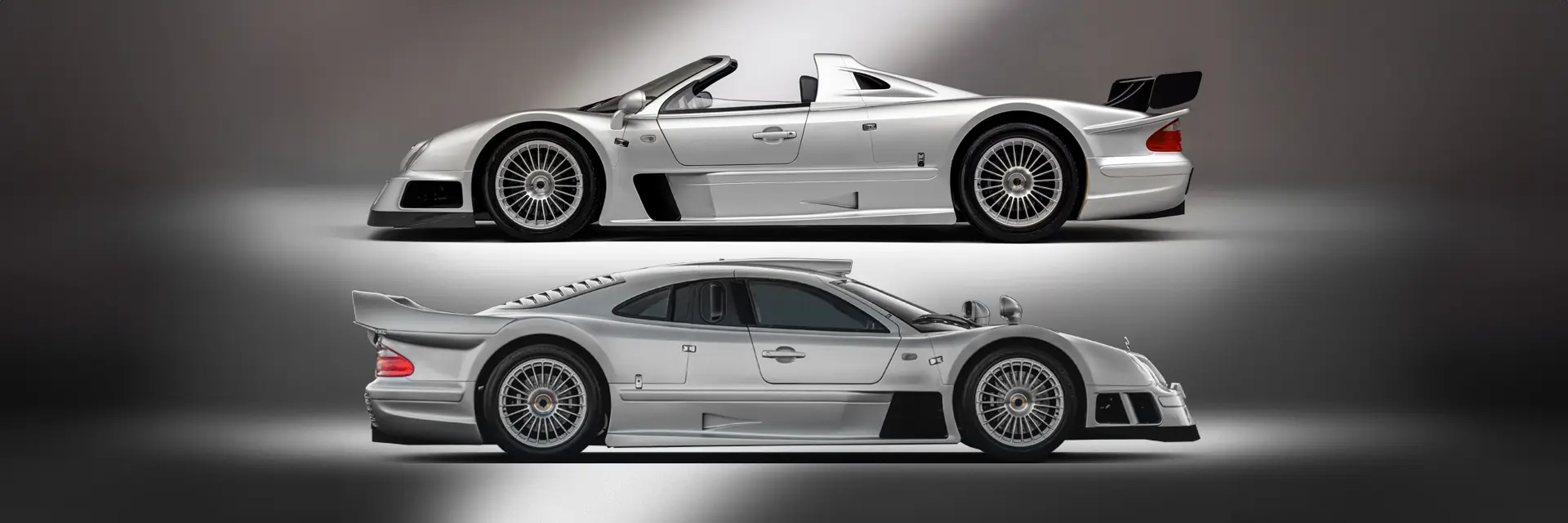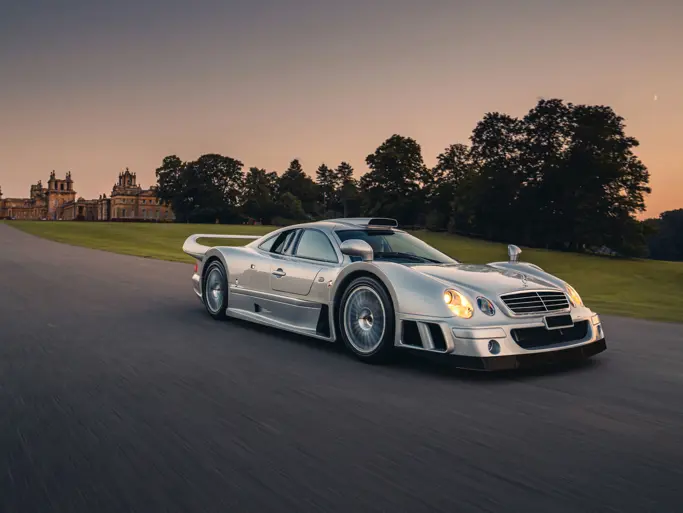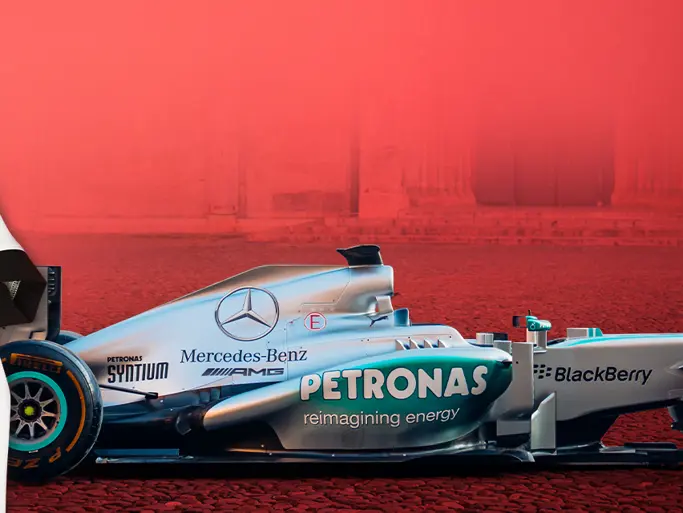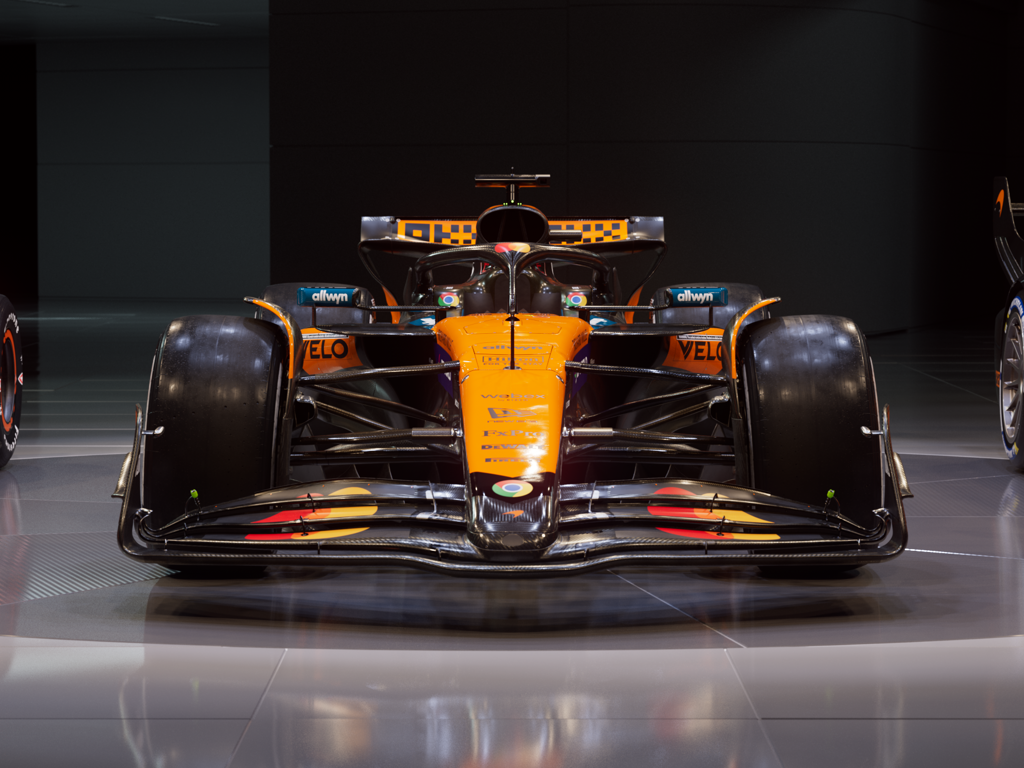The Mercedes-Benz CLK GTRs represent incredibly sought-after hypercars in today’s marketplace, and one look at their sleek, race-inspired wide-bodies gives admirers only a small part of their particularly unique story. It is not often one comes across a Mercedes-Benz like this—because this particular car was the result of turning a purpose-built race car into a road-going car to meet race series sanctions, or, particularly, FIA’s regulations. Excluding prototypes, just 20 coupes and six roadsters were produced from 1998–1999 and 2006 (five of the roadsters were produced in 2006). Beauty and rarity aside, the CLK GTR also symbolizes a significant milestone in motorsport history: Mercedes’ return to racing.
Mercedes’ decision to take part in what was then the new “Grand Touring” endurance series in the ‘90s—the FIA GT Championship—was certainly a big deal for the manufacturer. It had been decades since the German automaker had competed in a top-tier, global racing platform, having stepped away from it all following the 1955 24 Hours of Le Mans. Up until its entrance in the GT series, Mercedes-Benz had competed in smaller racing series, and dominated the German DTM series as reigning champs 1994–1996. But Mercedes-Benz had yet to make a return to the global stage. The German marque set its sights on the 1997 FIA GT season. But first, it needed a car.
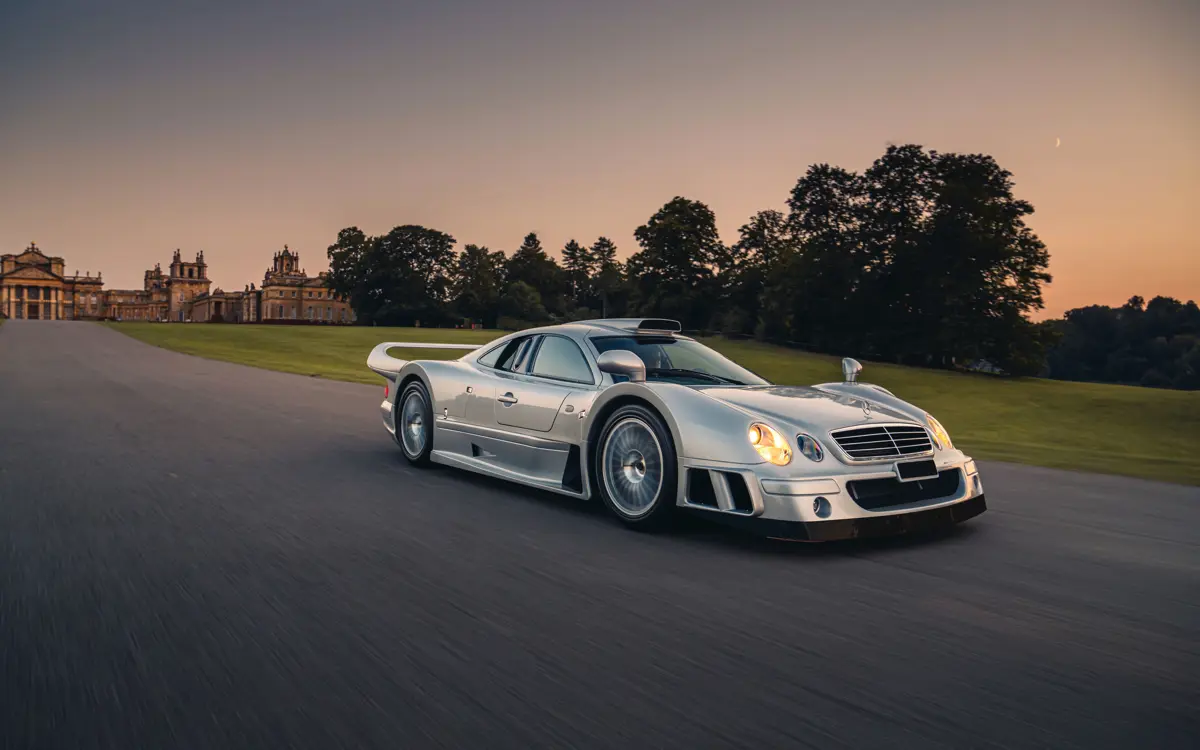
Most manufacturers participating in GT series typically utilized a production car, heavily modifying it to meet the specific series regulations for racing. McLaren did this with the F1: the unique Gordon Murray-designed three-seater housed a naturally aspirated 6.1-litre BMW V-12 outputting 611 hp (620 bhp). The race-prepped F1 GTR won the 1995 24 Hours of Le Mans, with three other F1 GTRs finishing third, fourth, and fifth. McLaren’s benefit of starting with the road car was that it could easily meet the then GT series’ production requirements of at least 25 road-going vehicles for customer sales. In fact, McLaren produced 106 examples of the F1 from 1992–1998. Due in large part to its race success and scarcity, the McLaren F1 has remained one of the most sought-after supercars ever built.
Mercedes-Benz and Porsche, both GT series’ competitors at the time, chose to build their entrants from the ground up to meet series regulations. And while their output of customer vehicles was much lower compared to McLaren, both ended up presenting outstanding and highly competent examples.
The creation of Porsche’s 911 GT1 was a response to McLaren’s 1995 win at Le Mans, and, in turn, the German automaker decided to build a whole new GT competitor. The program tapped legendary, renowned Porsche Engineer Norbert Singer to bring the car to life. Singer started with dropping a 3.2-litre twin-turbocharged water-cooled flat-six engine, capable of producing 600 hp into a monocoque chassis. The exterior exhibited some familiar Porsche styling elements, with the front of the car derived from the Type 993 911, while the rear closely emulated the Porsche 962 Dauer race car.
The 911 GT1 made its debut at the 1996 24 Hours of Le Mans, where it placed second and third overall but first and second in what was the LMGT1 class. Porsche would see another second-place finish at the 1997 race. But in 1998, it would finally take home an overall victory at the 24 Hours of Le Mans.
The Straßenversion or “street version” Porsche GT1 would be a slightly detuned version of the GT-class car, yet still entirely capable of reaching a top speed of 194 mph and producing a 0–60 time of 3.6 seconds. Porsche would only make 25 road-going examples of the 911 GT1 from 1996–1998.
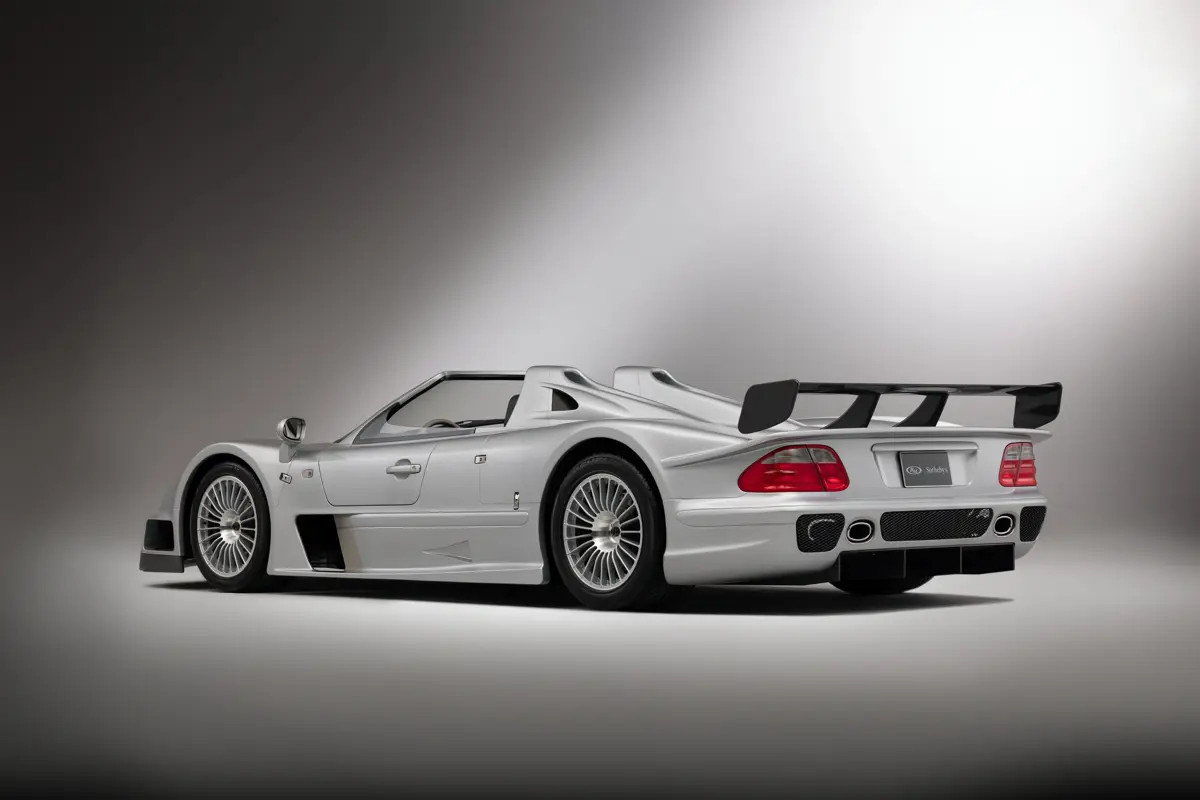
As for Mercedes-Benz, it is fairly clear to see the CLK served as the inspiration for the front end of its GT car, but otherwise the purpose-built race car was also the basis of the road-going model. For the race car, Mercedes-Benz installed a newly re-tuned six-liter M120 V-12 (originally from the S- and SL-Class) tuned to develop an impressive 592 hp and 516 lb.-ft. of torque, capable of a 0–60 time of 3.8 seconds and a top speed of 205 mph. Mercedes-Benz routed that power through a six-speed sequential transaxle. Combined with a front and rear double-wishbone suspension with pull-rod coil springs, adjustable shock absorbers, and six-piston brakes with fairly large carbon-composite rotors, it was ready for track action.
When the CLK GTR hit the track for the 1997 GT season, it would win six of 11 endurance events, landing Mercedes-Benz both the Drivers’ and Constructors’ Championship that year. Mercedes-Benz would see another successful 1998 season—winning the Drivers’ and Constructors’ Championship for a second year in a row, a feat accomplished by the McLaren F1 GTR in 1995 and 1996 BPR Global GT Series (what would become the FIA GT Championship in 1997).
That winning DNA went into the road-going CLK GTR Straßenversion that was unveiled at the 1997 Frankfurt Motor Show, which was nearly mechanically identical. Typical road-ready additions to the coupe included anti-lock brakes, air conditioning, and an audio system. However, if you can believe it, Mercedes-Benz and AMG took a different approach to the road version of the GTR in comparison to Porsche, in that it was more powerful than the race car. Further development of the engine brought with it an increased displacement of nearly 6.9 liters, which increased power output by 30 more hp to 622 hp and 539 lb.-ft. of torque (an additional 23 lb.-ft.). Initially, only 20 of these incredible cars were made as coupes and one as a roadster. Five more roadsters would be produced with the spare CLK GTR chassis after coupe production had concluded. The roadsters did require a few more modifications to become open-tops, including the moving of the engine intakes to the sides, door-mounted mirrors, integrated roll-hoops behind the seats and a new front grille and rear wing.
Besting the likes of the Porsche GT1 and the McLaren F1 GTR in period, the Mercedes-Benz CLK GTR represents the storied return of the renowned German marque to the global stage of racing, triumphantly winning back-to-back FIA GT Championships in 1997 and 1998. The German automaker further immortalized this success with road-going versions of the championship-dominating cars, marking the company's first road-going supercar offerings with the CLK GTR Coupe and Roadster, both of which set the stage for future Mercedes-Benz and AMG supercars.
With so few examples of each of these rare racing-inspired machines in existence, having one Coupe and one Roadster offered at our Las Vegas auction on 17 November will make for an incredibly special, once-in-a-lifetime event.

